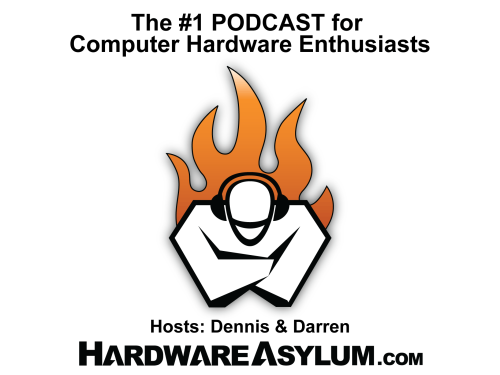The Different Types of Overclocking

Hosts: Dennis Garcia and Darren McCain
Time: 37:13
Subscribe Options
RSS (MP3)
iTunes (MP3)
Originally recorded October 2019

Hosts: Dennis Garcia and Darren McCain
Time: 37:13
Subscribe Options
RSS (MP3)
iTunes (MP3)
Originally recorded October 2019
Overclocking can be summarized into four different segments. Many of the segments overlap, which is part of the fun. First you have the Factory overclock. This is the type where you “buy” your level of performance and can be as simple as buying a Core i9 over a Core i7 or something more involved like picking up an EVGA RTX FTW that comes “hot clocked” from the factory and a special board design to increase stability.
The next level is the casual overclocker and this really describes the person who buys the factory overclocked hardware but instead of running the hardware out the box decides to push things a little further. So that Core i9 they bought is now running overclocked and they enabled XMP on their 3600Mhz memory to support the two factory overclocked video cards they are running.
These two levels often dabble with high-end aircoolers, AIO watercoolers are assemble custom watercooling kits like what you can get from Thermaltake and EK
After that things tend to get a little Extreme and things shift from a 24/7 stability level to a realm where you experiment with super cooling all to push the hardware beyond what it was ever indented to run. Cooling methods such has LN2 and DICE (Dry Ice) are common with the intent to set benchmarking records for fun and profit.
Of course the purpose of this performance advantage is to “tune” the hardware to that everything is running faster. The processor is overclcocked along with the memory, video card and sometimes even the PCI Express bus has been increased all to get a few extra points before the system crashes.
The final style of overclocking isn’t something that Dennis has done very often and is what he calls “Edge” overclocking. This style doesn’t require that any benchmarks be run aside from CPUz where the software records the maximum clock frequency. For processors this is done with the coldest temperatures and a careful delegation of voltage and frequency to ensure that every last be of speed can be recorded because even 1 Mhz can be the difference between first and second.
Episode 104 featured music:
Little People - Start Shootin' (http://www.littlepeoplemusic.com/)
 Hardware Asylum Podcast Upgrades
Hardware Asylum Podcast Upgrades Creative Sound Blaster Re:Imagine Modular Audio Hub with AI
Creative Sound Blaster Re:Imagine Modular Audio Hub with AI The State of Tech Events and the Challenges of Building PCs
The State of Tech Events and the Challenges of Building PCs Exploring the New YTX Motherboard Form Factor and why ATX is King
Exploring the New YTX Motherboard Form Factor and why ATX is King Shopping for New Gaming Headphones Looking at the Oldest and Newest Keyboards
Shopping for New Gaming Headphones Looking at the Oldest and Newest Keyboards Overclocking your Vegetable Garden with Hydroponics
Overclocking your Vegetable Garden with Hydroponics Virtual Unboxing of a Vintage Tandy 1000 TX
Virtual Unboxing of a Vintage Tandy 1000 TX Checking out the Latest Battlefield 6 Multiplayer and Amazon Affiliate Shopping
Checking out the Latest Battlefield 6 Multiplayer and Amazon Affiliate Shopping View All Episodes
View All Episodes